June 8, 2025 | 02:35 GMT +7
June 8, 2025 | 02:35 GMT +7
Hotline: 0913.378.918
June 8, 2025 | 02:35 GMT +7
Hotline: 0913.378.918

Vietnamese durian is facing increasing competitive pressure in the Chinese market. Photo: Thanh Son.
Vietnamese durian exports have shown significant growth in the first months of the year. According to Mr. Dang Phuc Nguyen, the Secretary-General of VinaFruit, the export of durian in the first four months of this year is projected to exceed 500 million USD, representing a 30% increase compared to the previous year. The durian exports have experienced a surge in demand from the Chinese market, resulting in a positive outlook for this sector. Simultaneously, durian production has increased since the start of this year due to the successful implementation of techniques to boost off-season flowering of durian plants by growers in provinces such as Tien Giang and Vinh Long.
Nevertheless, Vietnamese durian has received multiple warnings from the Chinese market due to non-compliance with the Protocol on phytosanitary requirements for Vietnamese durian exported to China. The warnings primarily relate to the presence of prohibited insect infections, purchasing of durians from areas lacking approved production unit codes or with unclear origins, failure to adhere to approved packaging procedures, insufficient technical measures to manage and eradicate harmful organisms, and inadequate pre-shipment inspection. Alongside to this are warnings regarding food safety.
The main cause for China's warning about phytosanitary inspection and food safety for numerous shipments of Vietnamese durian is the insufficient oversight of production unit codes and packaging facility codes in various regions. Improving the management and monitoring of production unit codes and packaging facility codes in provinces where durians are grown is seen as a crucial measure to reduce the number of durian batches warned by China.

Durian fruit on a farm in Xuan Loc, Dong Nai. Photo: Thanh Son.
Dong Nai, located in the Southeast region, is a province known for its extensive fruit tree cultivation, particularly durian. Recently, there have been numerous alerts on the establishment of area codes and packaging facilities in the region. Mr. Tran Lam Sinh, Deputy Director of the Department of Agriculture and Rural Development of Dong Nai province, suggested the necessity of establishing and executing a comprehensive regional food safety monitoring program. This program would involve areas that cultivate durian, with each locality implementing its own monitoring program. Localities that do not have durian but have facilities for packaging durian must likewise enforce supervision of these packaging facilities.
Concurrently, establishing a comprehensive nationwide database that links information on food safety, growing area codes, packaging facility codes, and violations of plant quarantine targets by businesses and area code owners. This database will facilitate prompt traceability and foster a mechanism for coordination and information exchange between localities and the Plant Protection Department for effective monitoring.
The Ministry of Agriculture and Rural Development, localities, and businesses are concerned about maintaining the quality of exported durian. This is because countries in Southeast Asia, such as Thailand and Malaysia, are making significant efforts to enhance the quality of their durian in order to compete with Vietnamese durian in the Chinese market. Ms. Ngo Tuong Vy, CEO of Chanh Thu Fruit Import-Export Corporation, stated that Thailand had previously set a requirement that the exported durian must have a starch level of 32%. Thailand has increased the minimum starch content requirement for durian exports to 35% in response to the successful export of Vietnamese durians to China. Furthermore, Thailand will soon further raise the standard to 37%.
To guarantee the quality of durians, it is essential that they are picked at the appropriate stage of growth, and it is crucial to avoid harvesting unripe durians. Ms. Tuong Vy suggested implementing sanctions to ensure that farmers consistently harvest durians at the appropriate maturity level. Individuals who engage in the act of gathering immature durians shall be subjected to financial penalties.
According to Mr. Dang Phuc Nguyen, the responsibility for harvesting durians at the appropriate age lies mostly on traders and harvesters. Consequently, it is imperative to develop solutions that improve the comprehension, abilities, and professional consciousness of these individuals involved.
Mr. Vu Phi Ho from the Tay Nguyen Durian Joint Stock Company states that the quality of Vietnamese durians can be negatively impacted if any stage in the durian value chain, including cultivation, harvesting, packaging, shipping, and consumption, is not properly executed. Hence, it is imperative to enhance oversight and maintain careful execution at every level to assure the quality of Vietnamese durians.
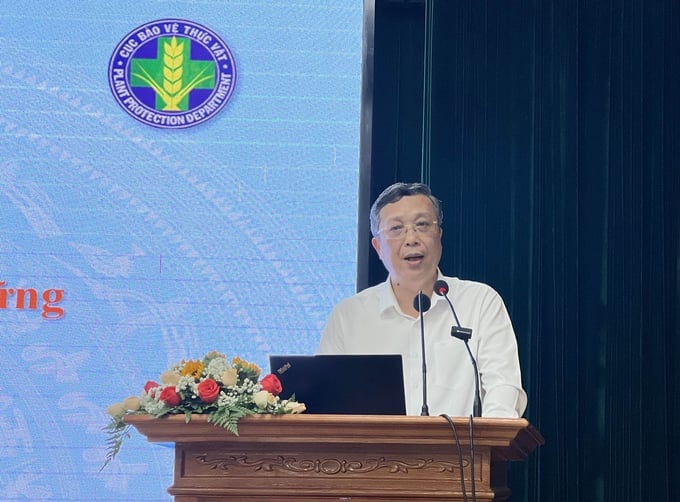
Deputy Minister of Agriculture and Rural Development Hoang Trung spoke at the Conference. Photo: Thanh Son.
During the Sustainable Durian Production and Export Conference held on May 10th, organized by the Ministry of Agriculture and Rural Development, Mr. Hoang Trung, Deputy Minister of Agriculture and Rural Development, highlighted the utmost importance of guaranteeing the quality of exported durians. This is currently the primary concern for Vietnamese durians to maintain a strong position in the global market, particularly in the face of intensifying competition from Thailand, Malaysia, and other countries, especially in the Chinese market.
Given the current surge in durian cultivation areas across various provinces and the entire country, the agencies under the Ministry of Agriculture and Rural Development must collaborate with local authorities in assessing the existing durian-growing areas.
The aim is to determine the most suitable locations for further expansion of this crop. A comprehensive evaluation of the entire durian cultivation process is necessary. It is imperative to establish new nationwide regulations for fresh durians that are legally enforceable. These regulations will serve as a foundation for competent authorities and local governments to carry out inspections, monitoring, and enforcement actions against any infractions.
Localities should enhance oversight of growing area codes and packing facility codes to ensure the preservation of their quality. Immediate verification and rectification of inaccuracies in the expanding area codes and packaging facility codes that have been identified as necessary. Simultaneously, encourage the establishment of enduring durian value chains in the area.
Translated by Linh Linh

(VAN) The U.S. Grains Council signed a 5-year cooperation agreement with the Partnership for Sustainable Agriculture in Vietnam (PSAV) during MAE's agricultural trade mission.
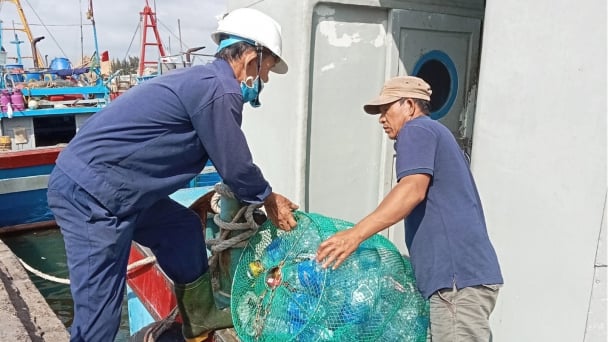
(VAN) Vietnam Agriculture and Nature News interviewed Mr. Vu Thai Truong, Acting Head of Climate Change and Environment at UNDP Vietnam on the occasion of World Environment Day (June 5).
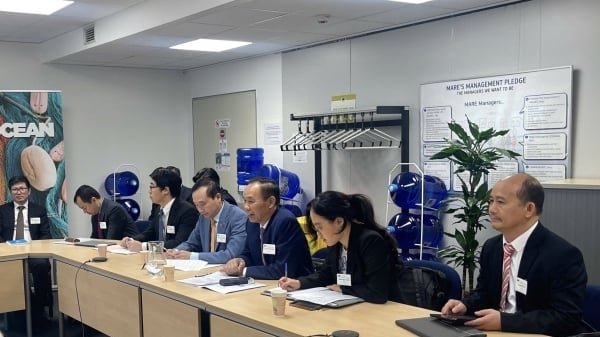
(VAN) On June 5, Deputy Minister of Agriculture and Environment Phung Duc Tien held a working session with the Directorate-General for Maritime Affairs and Fisheries of the European Commission (DG MARE).

(VAN) According to Prof. Dr. Mai Trong Nhuan, former Director of Vietnam National University, Hanoi, the national ocean spatial plan is devised to guide the ocean economy toward achieving its key objectives.
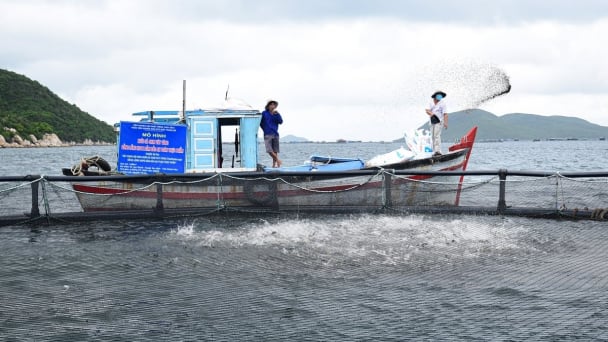
(VAN) Vietnam’s aquatic resources decreased from over 5 million tons in the period 2000-2005 to just over 3.9 million tons in the period 2016-2020.

(VAN) The U.S. Congress recognizes Vietnam's role as a reliable and dynamic economic partner in the Asia-Pacific region.
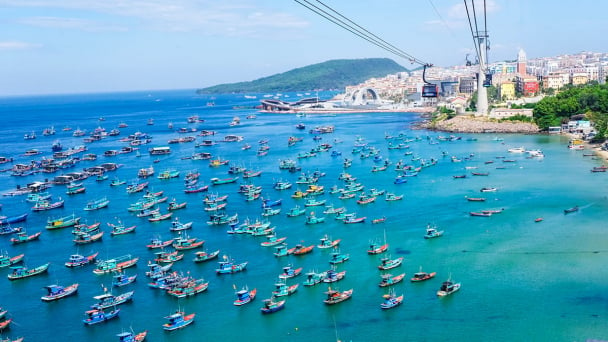
(VAN) Vietnam Sea and Island Week 2025 is a powerful call to action for connecting technology and unlocking policies, aiming towards a modern, sustainable blue ocean.